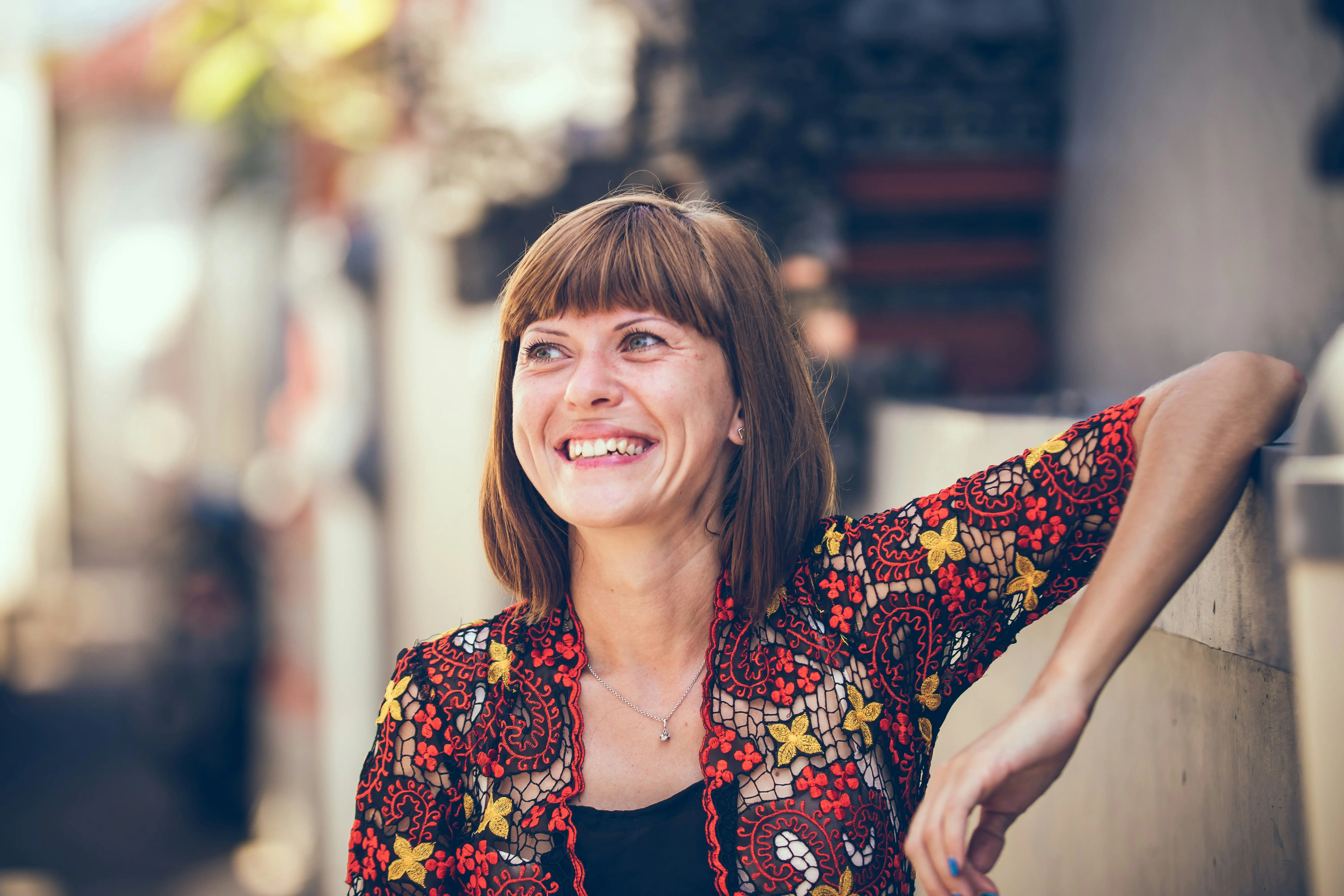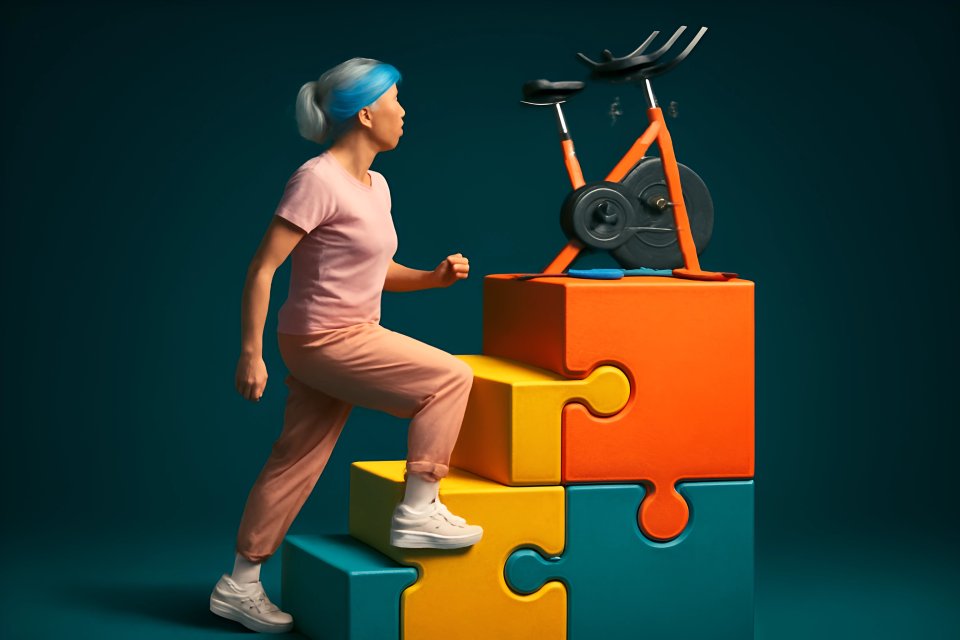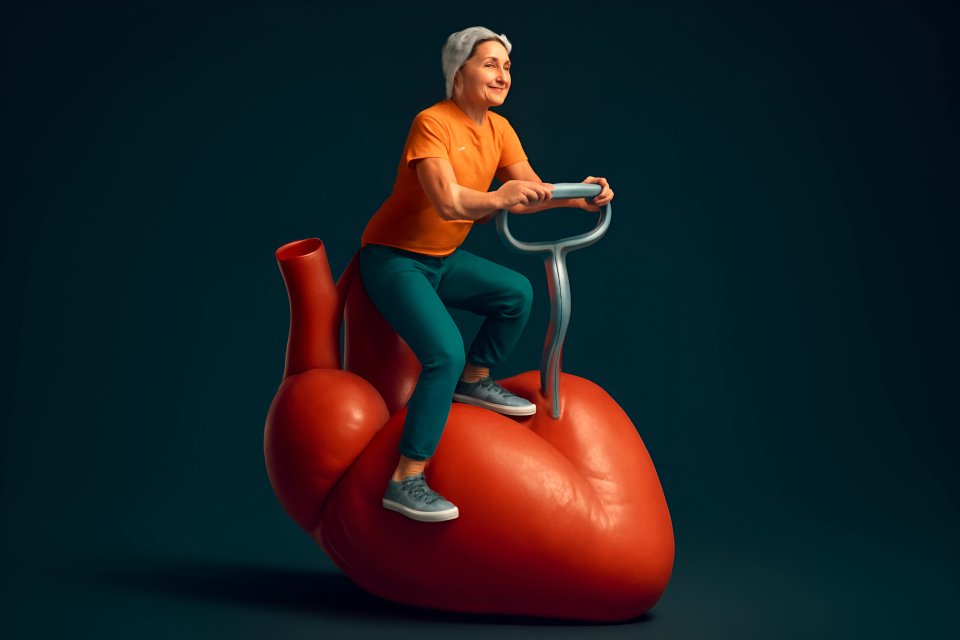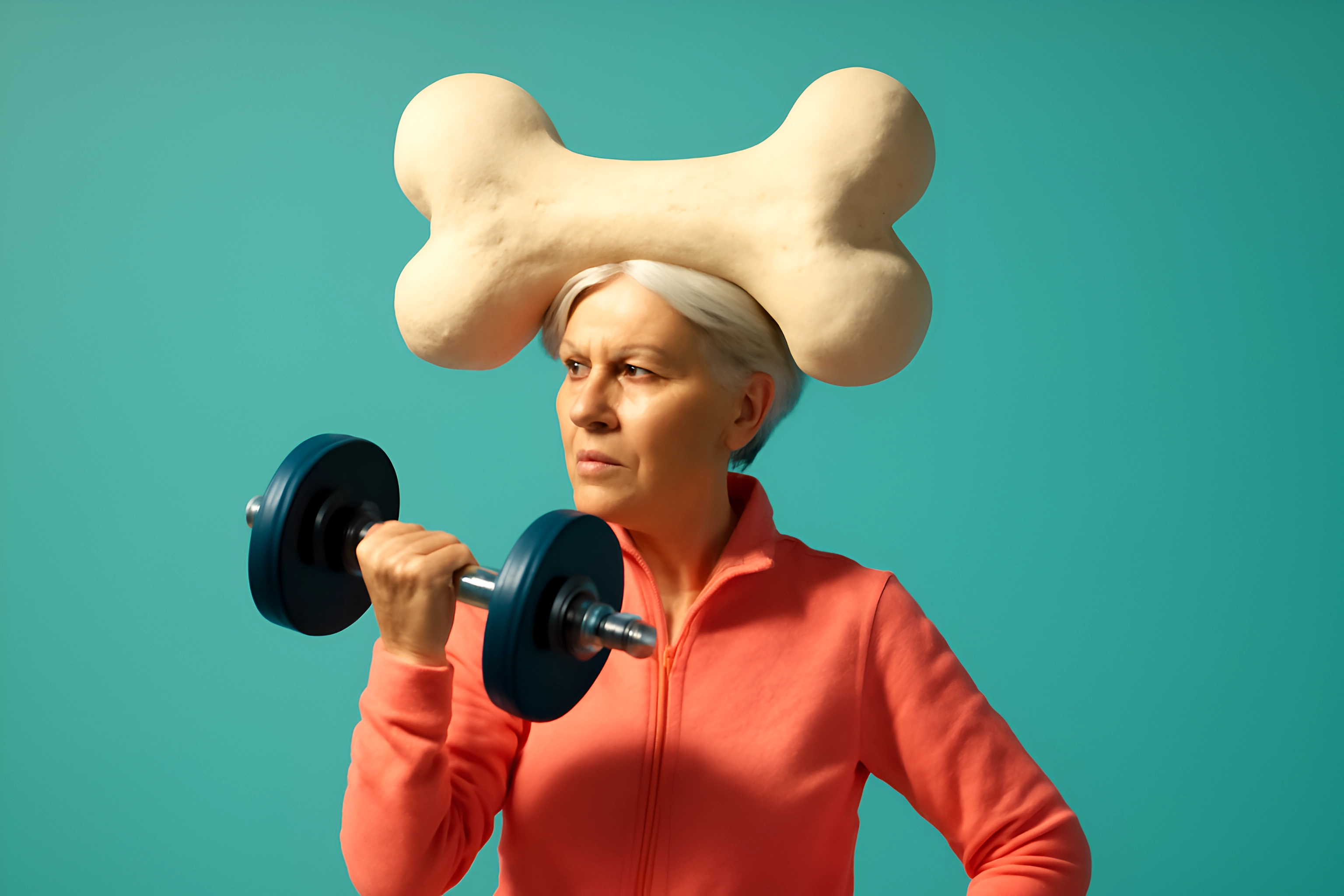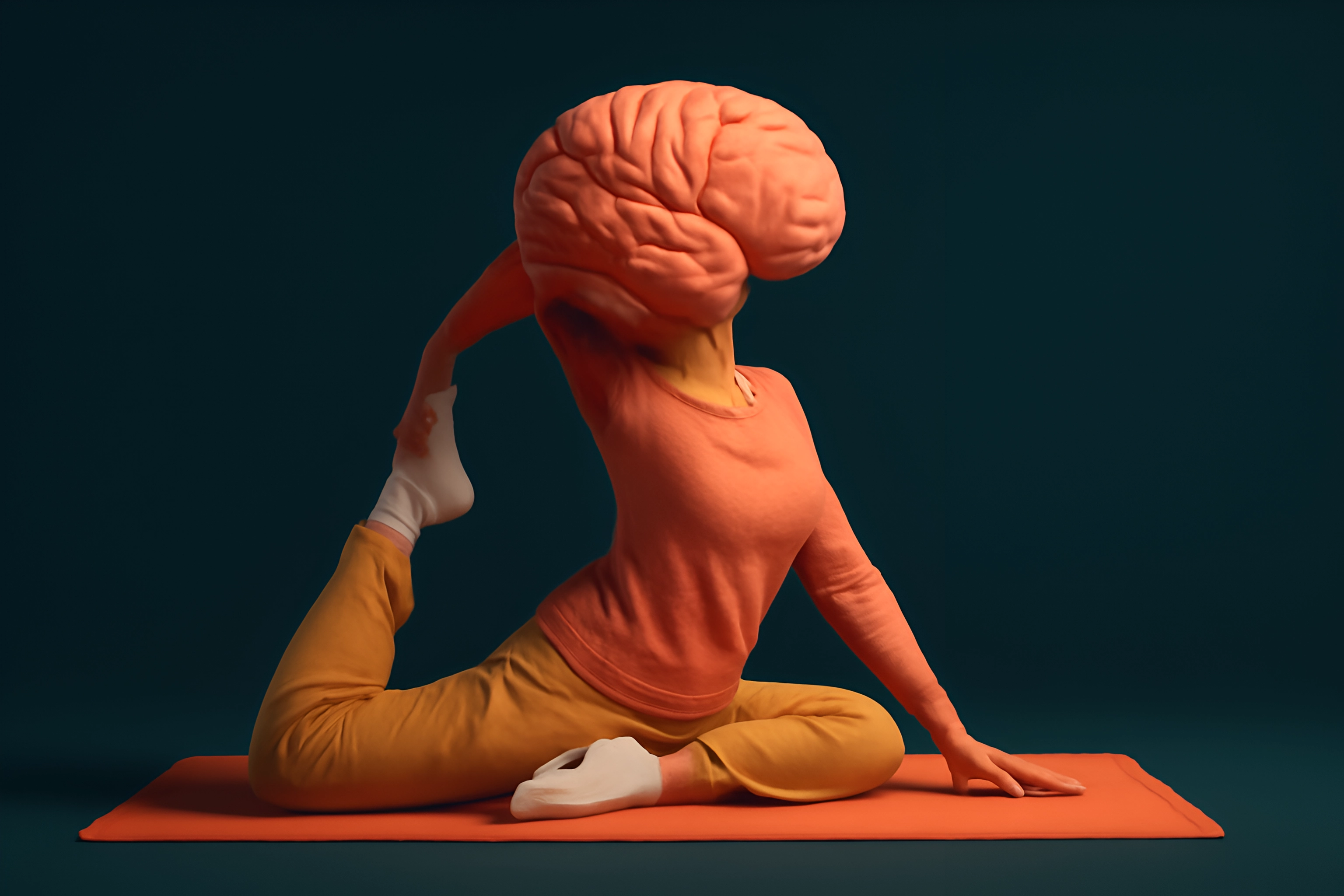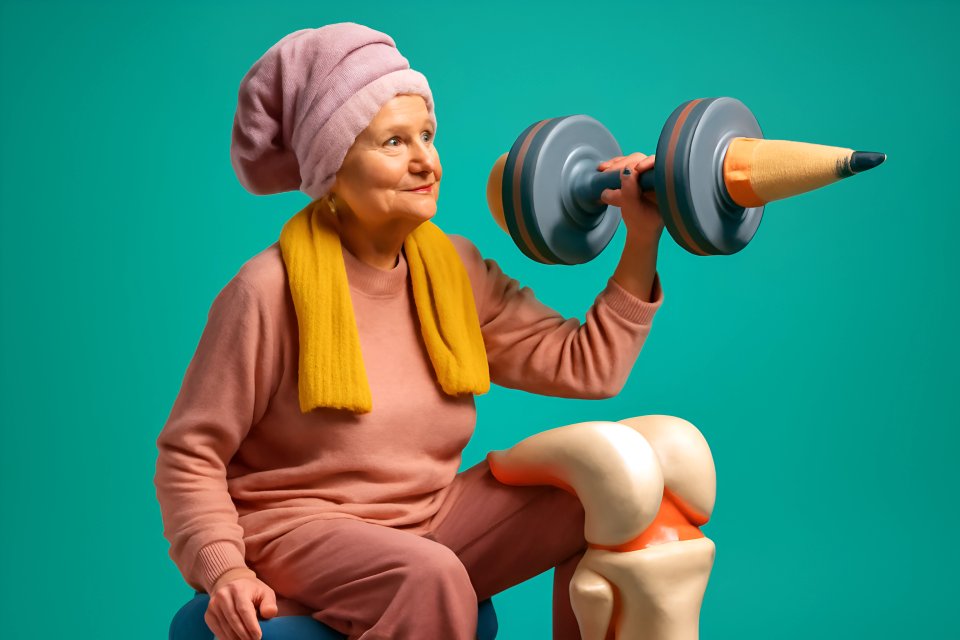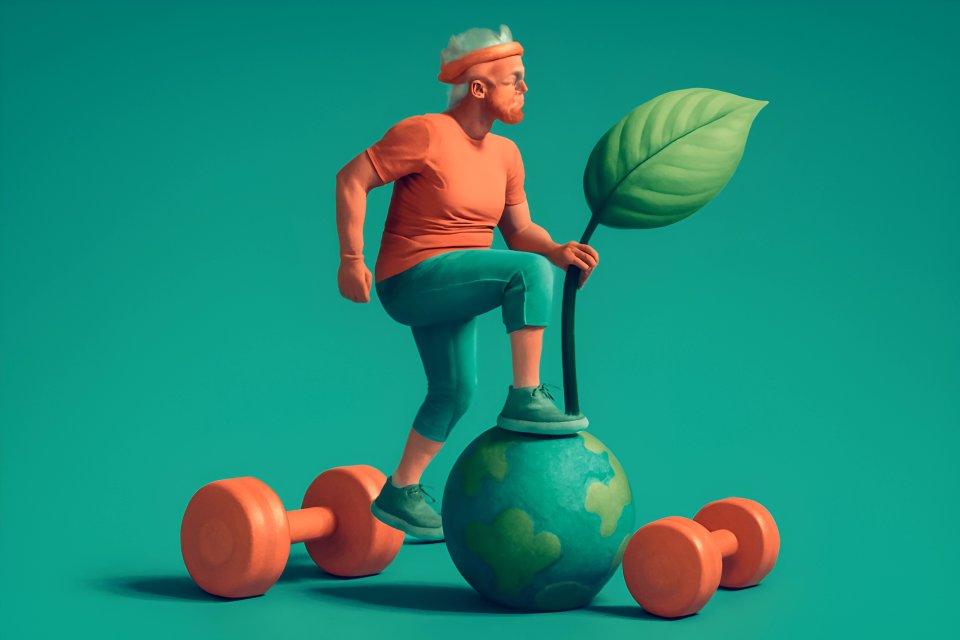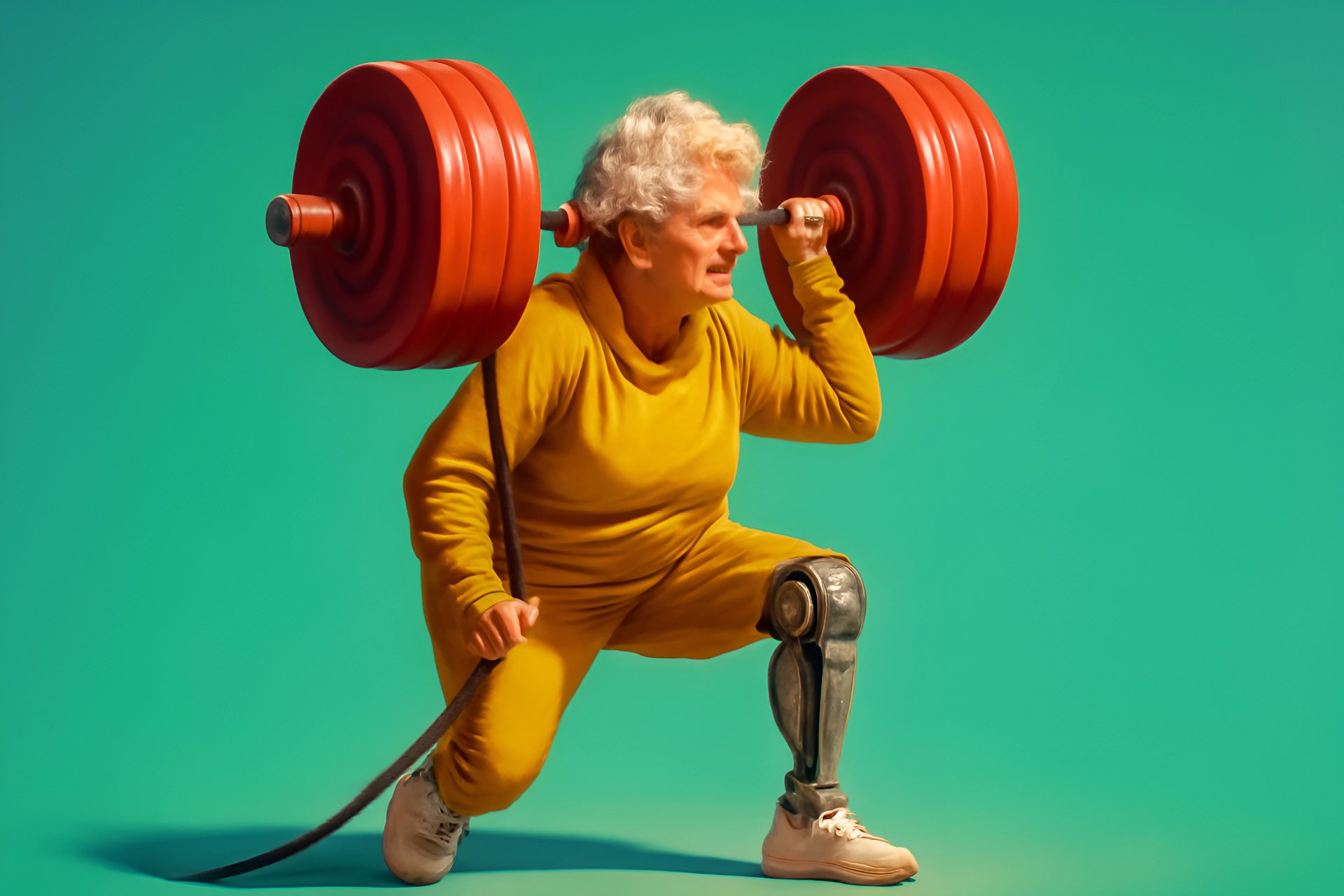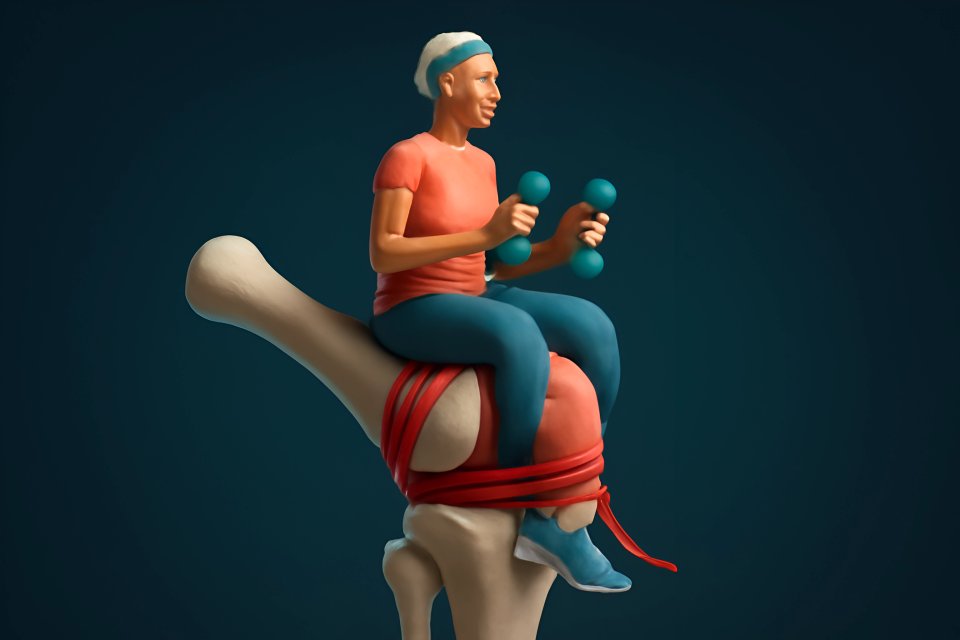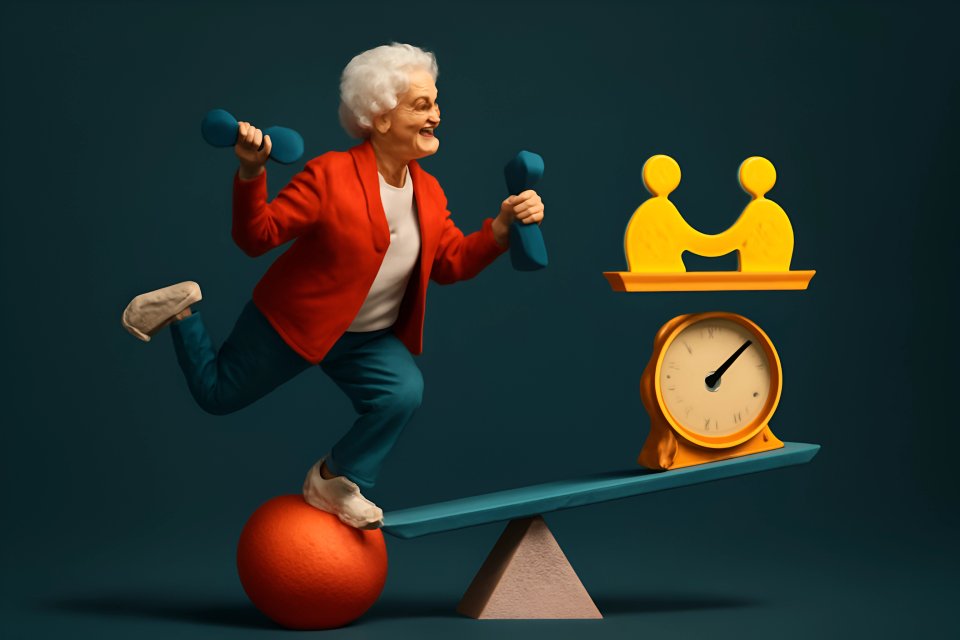
Introduction: The Secret to Feeling Stronger, Not Sorer
Do you want to stay active but worry about achy joints, old injuries, or the risk of a fall? You're not alone. The punishing ‘go hard or go home’ fitness mentality simply doesn’t work for us anymore, and frankly, it never should have. But what if the secret to lasting fitness, to true vitality, wasn't about intensity, but consistency?
This is the power of sustainable, low-impact exercise. It’s the key to building real-world strength, boundless energy, and unshakable confidence without the painful wear and tear on your body. This isn't about chasing a younger version of yourself; it's about empowering the incredible person you are right now.
In this guide, we’re moving beyond generic advice. We will give you specific, step-by-step exercises and a clear plan to build a routine that you can actually stick with for years to come. Get ready to discover a smarter, safer, and more enjoyable way to move.
Why "Low-Impact" is Your Body's Best Friend After 50
Let's be clear: "low-impact" does not mean "low-benefit." It simply refers to movements that keep at least one foot on the ground at all times, dramatically minimizing the jarring stress on your joints. Think of it as the ultimate investment in your body's long-term security and survival.
This approach is about working with your body, not against it. It’s a powerful strategy that delivers all the rewards of exercise—strength, stamina, and a sharper mind—without the price of chronic pain or injury. You get to build yourself up, day by day, instead of breaking yourself down.
Protects Your Joints
Your joints have carried you through a lifetime of experiences, and now it's time to protect them. Low-impact exercise is your number one ally in this mission. Activities like aquatic exercise are revolutionary because the water's buoyancy can reduce your body weight by up to 90%, allowing you to move freely and without pain, which is a game-changer for anyone with arthritis.
Gentle movements, such as those found in chair yoga, do more than just avoid stress; they actively nourish your joints. This type of exercise stimulates the circulation of synovial fluid, which is like oil for your body's hinges, lubricating cartilage and reducing inflammation. By choosing these joint-friendly exercises for seniors, you are actively preserving your mobility for the long haul.
This protective quality is especially crucial for managing conditions like osteoarthritis or osteoporosis. Sustained, gentle routines are proven to improve joint function and reduce stiffness far more effectively than sporadic, high-intensity workouts that can leave you feeling worse. You are taking direct control over your comfort and physical independence.
Builds Functional Strength
What good is strength if you can't use it in your daily life? Functional strength is the power to carry groceries, lift your grandkids, and get up from a low chair with ease. This is the strength that truly matters, and low-impact exercises are designed to build it.
Exercises like the chair squat directly mimic the motion of sitting and standing, strengthening the exact muscles you need to maintain your independence. According to the American Heart Association, engaging in resistance training just twice a week is essential to counter age-related muscle loss, which can decline by 3-8% per decade after age 30. These movements use your own bodyweight to build a resilient, capable physique.
Wall push-ups build the upper-body power needed to push open a heavy door, while glute bridges stabilize your core and pelvis for safer stair climbing. The beauty of these exercises is their scalability; they build profound strength without ever putting your joints at risk. You’re not just exercising; you’re training for a more capable and confident life.
Improves Balance and Reduces Fall Risk
A simple fall can change everything. After age 50, our natural balance systems can begin to weaken, but this is not a decline you have to accept. Low-impact balance training directly targets the muscles and neural pathways that keep you steady on your feet, safeguarding your independence.
Exercises like the supported single-leg stand are incredibly effective because they safely challenge your stability, rebuilding your body's internal sense of balance, or proprioception. In fact, clinical trials show that the ancient practice of Tai Chi can reduce fall risk by an astonishing 50% by teaching controlled weight shifts and improving ankle stability. This is a direct investment in your personal safety and security.
The National Institute on Aging confirms that daily balance practice leads to significant improvements in gait and stability. Even just a few minutes a day can retrain your body to react more quickly and effectively, helping you navigate uneven sidewalks or cluttered rooms with confidence. You are building a foundation of stability that allows you to move through the world without fear.
Boosts Heart Health Gently
You don't need to pound the pavement to get a powerful cardiovascular workout. Low-impact exercises can elevate your heart rate safely and effectively, strengthening your most vital organ without the jarring impact of running or jumping. This is the smart way to build endurance.
A brisk walk, for instance, is one of the most potent tools for cardiovascular health. Research shows that accumulating 150 minutes of moderate-intensity cardio per week is linked to a 28% lower risk of cardiovascular mortality among older adults. It strengthens your heart muscle, improves circulation, and helps manage blood pressure.
Water aerobics offers a unique dual benefit: the water provides gentle resistance to challenge your muscles while its natural pressure improves blood flow back to the heart. This allows you to get your heart rate up safely, making it an ideal choice for those managing other health conditions like diabetes. You are fortifying your heart for a long and active life.
Enhances Mood and Energy
Tired of feeling tired? The right kind of movement is the ultimate energy booster. Sustainable, low-impact exercise triggers the release of endorphins and reduces the stress hormone cortisol, fighting off fatigue and lifting your spirits.
The rhythmic, flowing nature of activities like swimming or Tai Chi can induce a meditative state, proven to decrease symptoms of anxiety and depression. Furthermore, the social connection found in group classes, like water aerobics or a walking club, provides an additional mood lift that is critical for our well-being. This is about feeling good, inside and out.
Perhaps most importantly, you’re more likely to stick with it. Studies show that seniors have a 30% higher adherence rate to low-impact routines compared to high-intensity programs. Why? Because it feels good, it doesn't cause pain, and it leaves you feeling energized, not depleted.
The Building Blocks: 4 Essential Types of Low-Impact Exercise
1. Foundational Cardio: Walking & Water Aerobics
Cardio is the engine of your vitality, and walking is its most accessible fuel. It’s the foundation of countless senior exercise routines for a reason. But are you getting the most out of every step?
To perfect your walk, focus on the details. It’s not just a stroll; it’s a purposeful movement designed to invigorate your body. For those with significant joint pain, water aerobics is the ultimate solution, providing a challenging workout in a supportive, virtually weightless environment.
Here is how to get started with the Perfected Brisk Walk:
- Posture Check: Stand tall. Pull your shoulders back and down, and gently engage your core muscles.
- Heel-to-Toe: Make contact with the ground on your heel, roll smoothly through your foot, and push off from your toe.
- Arm Swing: Bend your elbows to a 90-degree angle. Swing your arms from your shoulders, not your elbows, to help propel you forward.
- Pace: Find a speed where you can still hold a conversation, but you couldn't easily sing a song. This is your moderate-intensity sweet spot.
2. Bodyweight Strength: Using Your Own Body as a Gym
You don't need a fancy gym to build life-changing strength. Your own body is the most effective piece of equipment you own, and using it correctly is the secret to building muscle that supports your skeleton, boosts your metabolism, and makes daily life easier.
These movements are designed to be safe, effective, and doable from the comfort of your own home. The chair squat is the king of functional exercises, directly strengthening the muscles you use every single time you get up.
Here is your step-by-step guide to the Perfect Chair Squat:
- Stand in front of a sturdy, armless chair with your feet shoulder-width apart and toes pointing forward.
- Keep your chest lifted and your back straight. Hinge at your hips and begin to bend your knees as if you are about to sit down.
- Lower your body with control until you lightly tap the surface of the chair.
Do not sit down completely or lose tension. - Powerfully push through your heels to return to the starting standing position. Squeeze your glutes at the top to complete the movement.
- Modification Tip: For extra balance, hold onto a countertop or the back of another stable chair.
3. Essential Balance & Stability
Excellent balance is not a gift; it's a skill you can build and maintain. Directly training the small stabilizer muscles and the neural pathways that control them is the most effective way to prevent falls and move with confidence.
This simple exercise can be done anywhere you have a stable surface for support, like a kitchen counter or a sturdy wall. The goal is to challenge your balance in a completely safe environment, gradually teaching your body to become more stable and reactive.
Follow these steps for the Supported Single-Leg Stand:
- Stand alongside a wall or countertop, placing one hand on it for light support.
- Shift your weight entirely onto your right foot, making sure it feels firmly planted on the ground.
- Slowly lift your left foot just a few inches off the floor. Keep your posture tall and your gaze fixed on a point in front of you.
- Hold this position for 15-30 seconds. Focus on keeping the ankle of your standing leg from wobbling.
- Gently lower your foot back to the ground and repeat on the other side.
4. Crucial Flexibility & Mobility: Yoga and Tai Chi
Strength is useless without the flexibility to use it. Improving your range of motion is essential for easing stiffness, reducing aches and pains, and performing everyday tasks like reaching for something on a high shelf or tying your shoes.
Mindful movements like yoga and Tai Chi are perfect for this, as they combine stretching with breathwork to calm the nervous system and increase mobility. The Seated Cat-Cow is a wonderful stretch to improve spinal flexibility and relieve back tension, and it can be done from any chair.
Here is how to perform the Seated Cat-Cow Stretch:
- Sit on the edge of a sturdy chair with your feet flat on the floor and your hands resting on your knees.
- Cow Pose: As you inhale, gently arch your back, push your chest forward, and lift your gaze slightly toward the ceiling.
- Cat Pose: As you exhale, round your spine, tuck your chin toward your chest, and draw your navel in toward your spine.
- Repeat this flowing movement slowly for 5-8 full breaths, linking your breath to the motion.
How to Build a Routine That Lasts: Your Sustainable Weekly Plan
The "Start Small" Philosophy
The biggest mistake people make is trying to do too much, too soon. The secret to a routine that lasts a lifetime is to start small. Commit to just 15-20 minutes, three days a week. The goal right now is not transformation; it's consistency.
Remember, the CDC confirms that even 10-minute bursts of activity provide real health benefits when they add up. By starting small, you build the habit of movement without feeling overwhelmed or sore. This is how you create a foundation for success.
Once the habit is formed, you can gradually increase the duration or frequency. This "start small" approach ensures that exercise becomes a permanent, positive part of your life, not a temporary chore.
The Mix-and-Match Method
Your body craves variety. Focusing on only one type of exercise can lead to plateaus and overuse injuries. The most effective approach is to mix and match cardio, strength, and flexibility throughout the week.
This method ensures you are building a well-rounded, resilient body. One day you focus on heart health, the next you build muscle, and the day after you work on mobility. This keeps your workouts interesting and targets all the different systems that contribute to your overall vitality.
For a more detailed guide, you can explore our resources on how to build a low-impact exercise routine over 50. This will help you take these building blocks and create a plan that is perfectly tailored to your goals and abilities.
Sample FitOverFifty Weekly Schedule
Here is a sample schedule to show you how it all fits together. Think of this as a template you can adapt to your own life.
| Day | Primary Focus | Sample Activities | Duration |
|---|---|---|---|
| Monday | Cardio | 20-min Brisk Walk | 20 min |
| Tuesday | Flexibility | 15-min Seated Stretches (Cat-Cow, etc.) | 15 min |
| Wednesday | Strength | 20-min Strength (Chair Squats, Wall Push-ups) | 20 min |
| Thursday | Active Rest | Leisurely stroll or light gardening | Variable |
| Friday | Cardio | 20-min Water Aerobics or another Brisk Walk | 20 min |
| Saturday | Balance & Strength | 15-min Balance (Single-Leg Stands) & Light Weights | 15 min |
| Sunday | Rest | Complete Rest or Gentle Stretching | - |
The Golden Rule: Listen to Your Body
This is the most important rule of all. You must learn to differentiate between the "good" feeling of muscle fatigue and the "bad" signal of sharp pain. Productive soreness feels like a dull, generalized ache in the muscles you worked, while pain is often sharp, localized, and a sign to stop immediately.
Permission to rest is not a weakness; it is the key to sustainability. If you are feeling unwell or overly fatigued, taking a day off is smarter than pushing through and risking injury or burnout.
Always remember to stay hydrated and exercise safely, especially in extreme temperatures. Your body is your wisest guide—learning to listen to its signals is the ultimate act of self-care.
Don't Forget the Essentials: Warm-Ups, Cool-Downs, and Safety
A proper warm-up is non-negotiable. It prepares your body for movement by gradually increasing your heart rate and sending blood flow to your muscles. Spend five minutes on dynamic movements like marching in place, gentle arm circles, and torso twists to get your body ready for action.
Equally important is the cool-down. After your workout, spend five minutes on static stretches to improve flexibility and help your body begin the recovery process. Gentle hamstring stretches using a chair, quad stretches, and holding a chest stretch will help reduce post-exercise stiffness.
Finally, always prioritize safety. Wear supportive, non-slip shoes. Stop immediately if you feel any sharp or unusual pain. And it is always wise to consult with your doctor before beginning any new exercise program to ensure it is right for you.
Conclusion: Your First Step to a More Vibrant Future
Let's be perfectly clear: this is the most effective path to long-term health, strength, and independence. By embracing sustainable, low-impact fitness, you are taking decisive action to protect your joints, build functional power, and secure your mobility for the adventures that lie ahead. This is how you invest in your own vitality.
It’s not about turning back the clock; it’s about winding it up for everything you still want to do. Every chair squat, every brisk walk, every balancing moment is a deposit in your health bank account. You are building a more resilient, energetic, and vibrant future, one step at a time.
We want to hear from you! What is ONE low-impact activity you will try this week? Share your commitment in the comments below—our community is here to cheer you on!
Frequently Asked Questions (FAQ)
Q1: How many days a week should a senior do low-impact exercise?
The official recommendation is to aim for 150 minutes of moderate-intensity aerobic activity, like brisk walking, spread throughout the week. This should be complemented with at least two days of muscle-strengthening activities. If you are just starting, begin with three 15-20 minute sessions per week and gradually build from there.
Q2: What are the best low-impact exercises if I have bad knees?
If you have bad knees, water is your best friend. Aquatic exercises like water walking or aerobics take all the pressure off your joints while still providing excellent resistance. On land, focus on seated exercises like leg extensions and stationary cycling on a recumbent bike.
Q3: Can I still build muscle with low-impact workouts?
Absolutely. You can build muscle at any age. The key is progressive resistance, which means you need to challenge your muscles. Bodyweight exercises like chair squats and wall push-ups are highly effective, and as you get stronger, you can add resistance with light weights or resistance bands to continue making progress.
Q4: How do I stay motivated when I don't feel like exercising?
Motivation often follows action, not the other way around. Try the "2-minute rule": commit to doing just two minutes of an activity. More often than not, once you start, you'll want to continue. Finding an exercise buddy or joining a class also provides powerful accountability to keep you on track.






